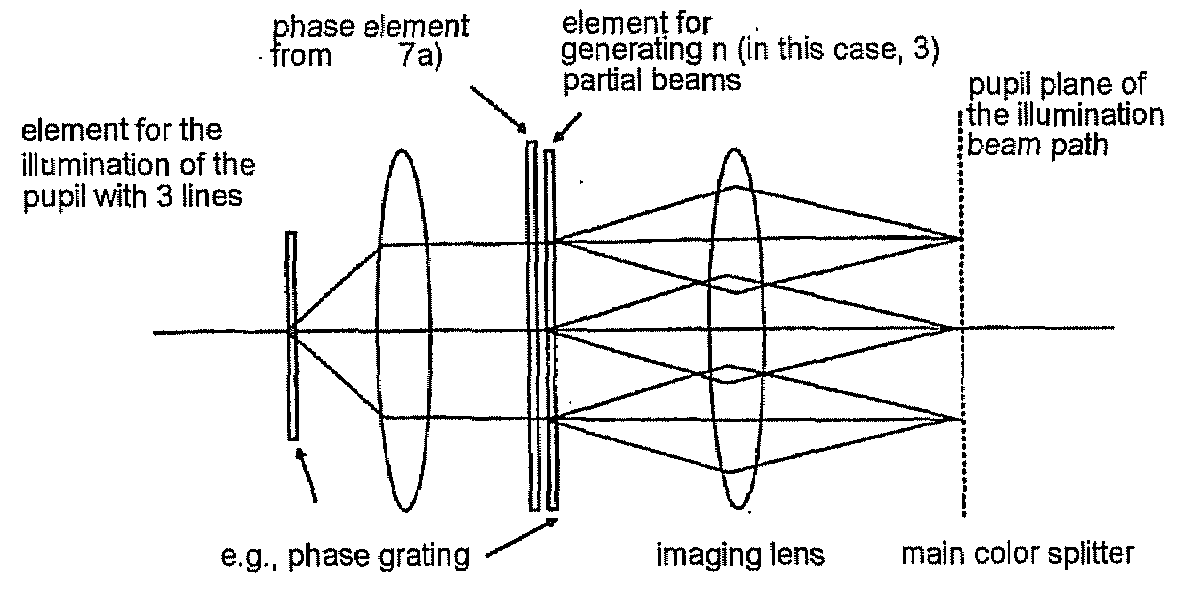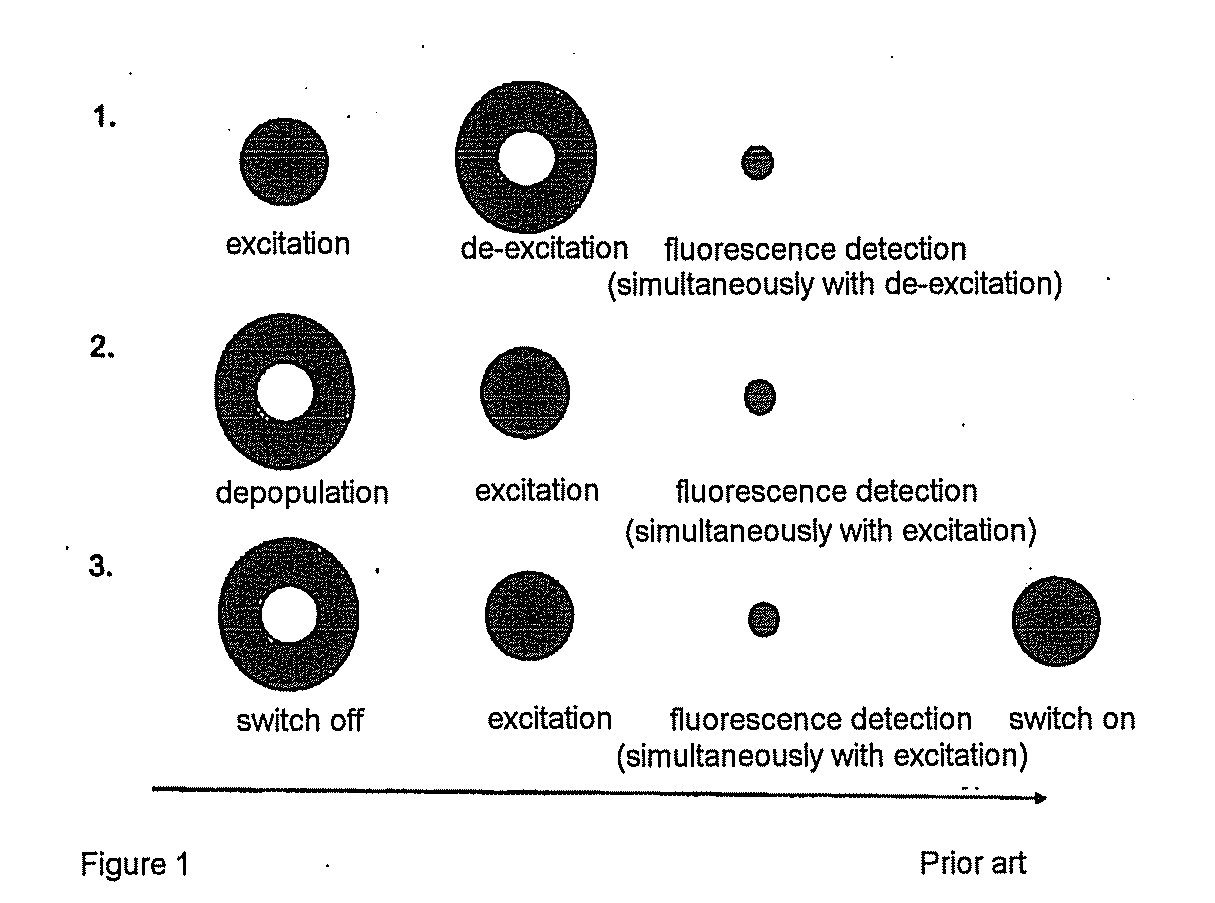Method and Arrangement for Collimated Microscopic Imaging
a microscopic imaging and collimation technology, applied in the field of collimation microscopic imaging methods and arrangements, can solve the problems of cumbersome technical aspects of confocal detection in multi-spot arrangement of this kind, and achieve the effect of simple technical implementation
- Summary
- Abstract
- Description
- Claims
- Application Information
AI Technical Summary
Benefits of technology
Problems solved by technology
Method used
Image
Examples
example
Switching of the Dronpa Protein
[0067]A suitable candidate for switching is the Dronpa protein (Habuchi et al., PNAS 102 (2005) 9511-9516). In this case, the switching off and the excitation are carried out with a wavelength in the range of about 450 nm to 520 nm. Switching on can be carried out in the range of 350 nm to 420 nm. This makes it possible to work, e.g., with the lines of the argon laser at 477 nm and 488 nm and to use a laser diode at 405 nm for switching on. The mutual switching on and off is shown in FIG. 11a). A detailed view of switching off is represented in FIG. 11b). This illustrates the long exposure times of about 5 ms for achieving a sufficient switching off. While the exposure time can be shortened by increasing the intensity, this would reduce the number of possible switching cycles compared to FIG. 11a) in which about 100 switching cycles are shown.
[0068]FIG. 12 shows a schematic view of a preferred illumination unit for a laser scanning microscope for use w...
PUM
| Property | Measurement | Unit |
|---|---|---|
| edge length | aaaaa | aaaaa |
| distance | aaaaa | aaaaa |
| microscopic imaging | aaaaa | aaaaa |
Abstract
Description
Claims
Application Information
 Login to View More
Login to View More - R&D
- Intellectual Property
- Life Sciences
- Materials
- Tech Scout
- Unparalleled Data Quality
- Higher Quality Content
- 60% Fewer Hallucinations
Browse by: Latest US Patents, China's latest patents, Technical Efficacy Thesaurus, Application Domain, Technology Topic, Popular Technical Reports.
© 2025 PatSnap. All rights reserved.Legal|Privacy policy|Modern Slavery Act Transparency Statement|Sitemap|About US| Contact US: help@patsnap.com



